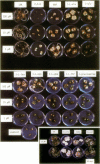Abstract
The auxin activities of a number of indoleacetylamino acid conjugates have been determined in three test systems: growth of tomato hypocotyl explants (Lycopersicon esculentum Mill. cv. Marglobe); growth of tobacco callus cultures (Nicotiana tabacum L. cv. Wisconsin 38); and ethylene production from pea stems (Pisum sativum L. cv. Alaska). The activities of the conjugates differ greatly depending on the amino acid moiety. Indoleacetyl-l-alanine supports rapid callus growth from the tomato hypocotyls while inhibiting growth of shoots and roots. Indoleacetylglycine behaves in a similar manner but is somewhat less effective in supporting callus growth and in inhibiting shoot formation. The other amino acid conjugates tested (valine, leucine, aspartic acid, threonine, methionine, phenylalanine, and proline) support shoot formation without supporting root formation or much callus growth. The tobacco callus system, which forms abundant shoots in the presence or absence of free indoleacetic acid, produces only rapid undifferentiated growth in the presence of indoleacetyl-l-alanine and indoleacetylglycine. The other conjugates inhibit shoot formation weakly if at all. Most of the conjugates induce sustained ethylene production from the pea stems but at rates well below the initial rates observed with free indoleacetic acid. Many, but not all of the effects of conjugates such as indoleacetyl-l-alanine can be mimicked by frequent renewals of the supply of free indoleacetic acid.
Full text
PDF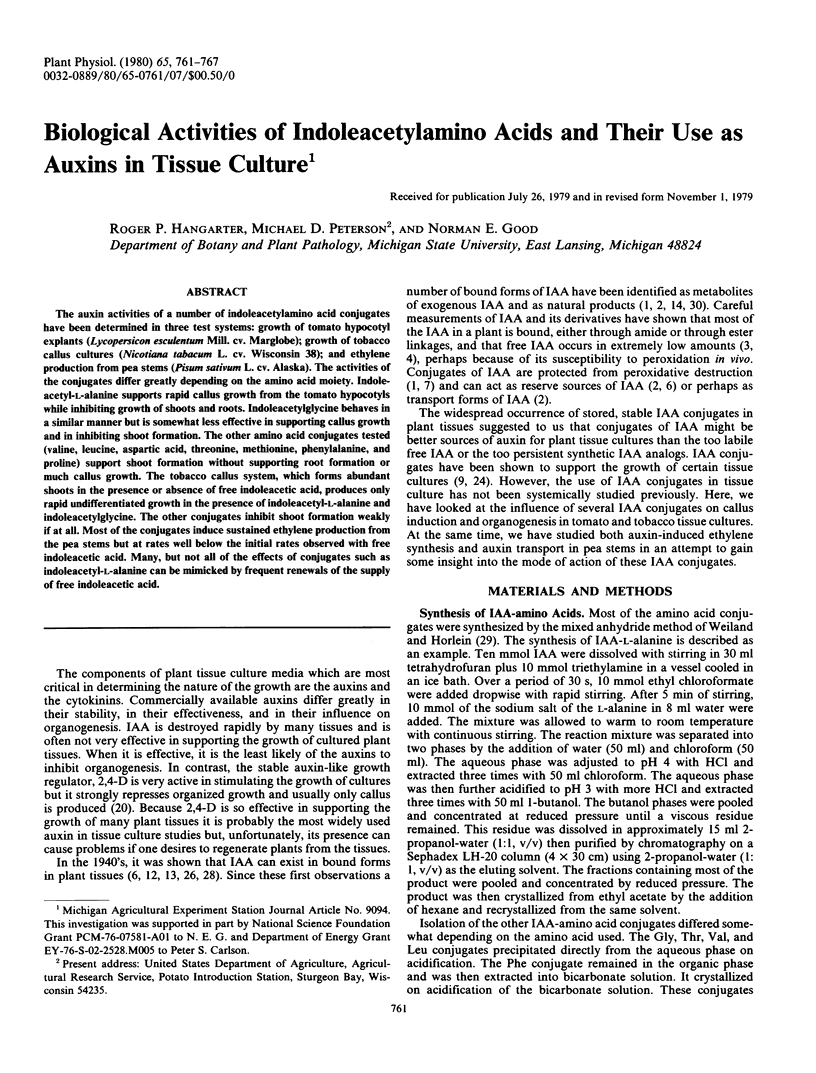
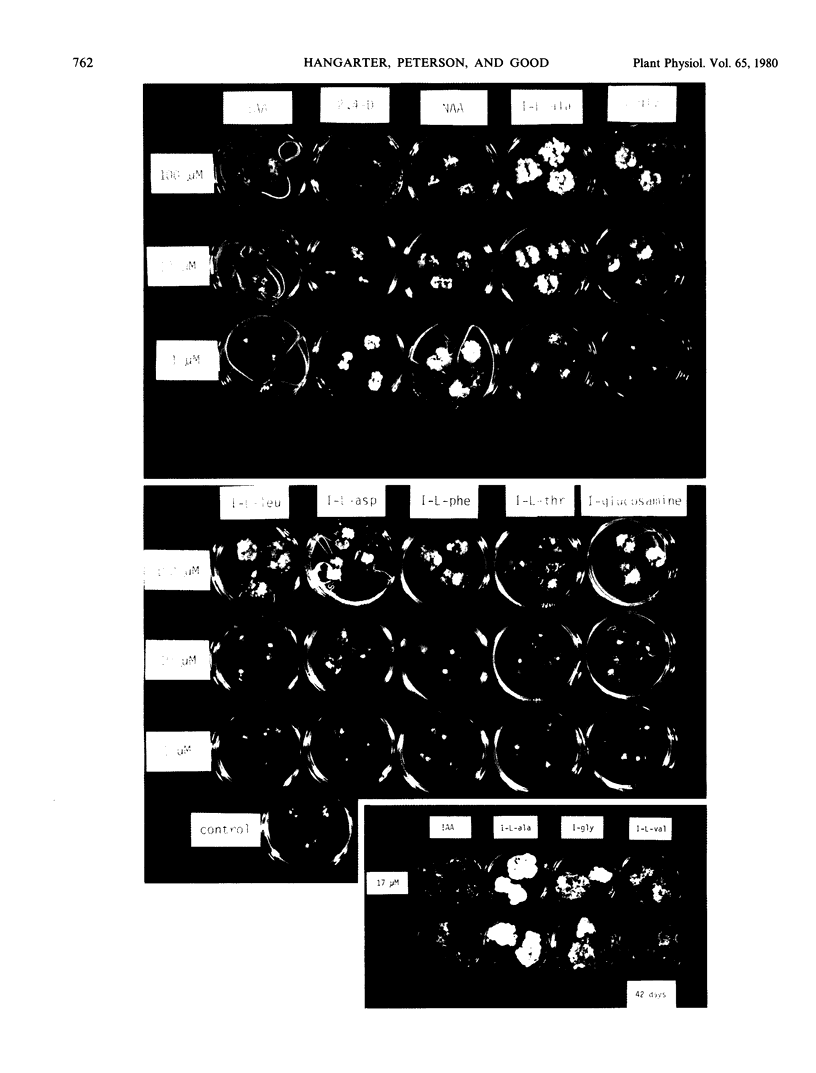
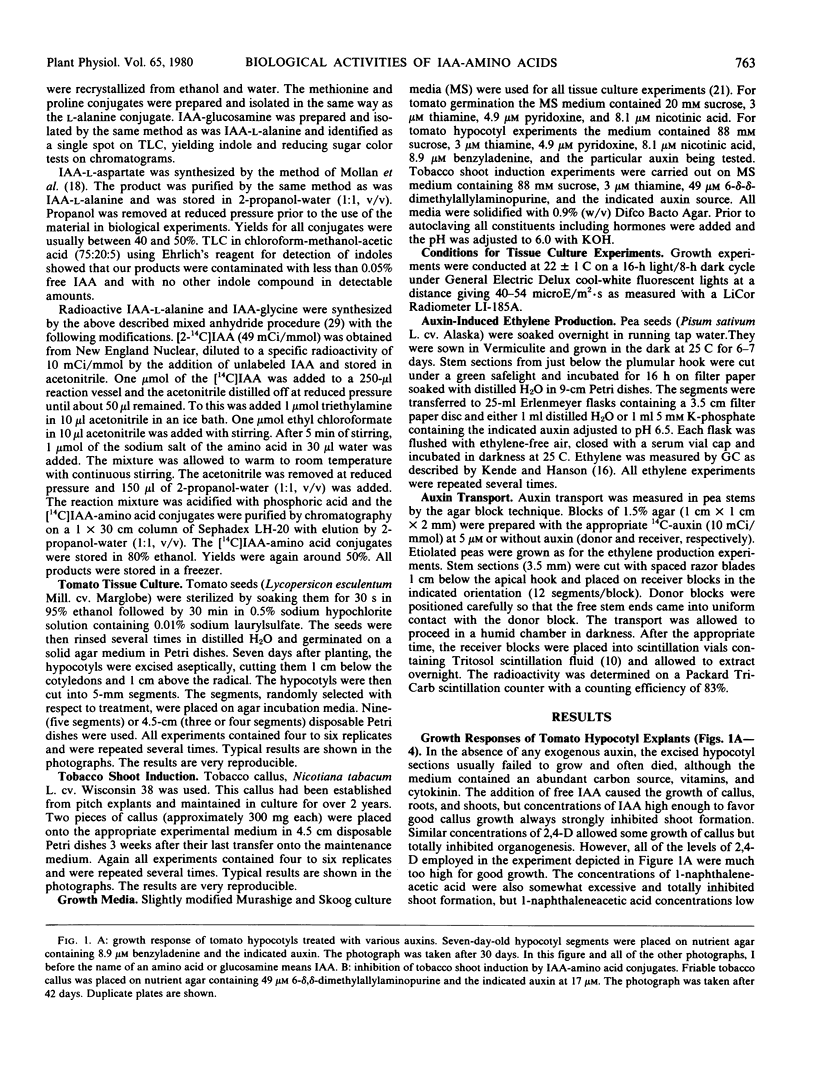
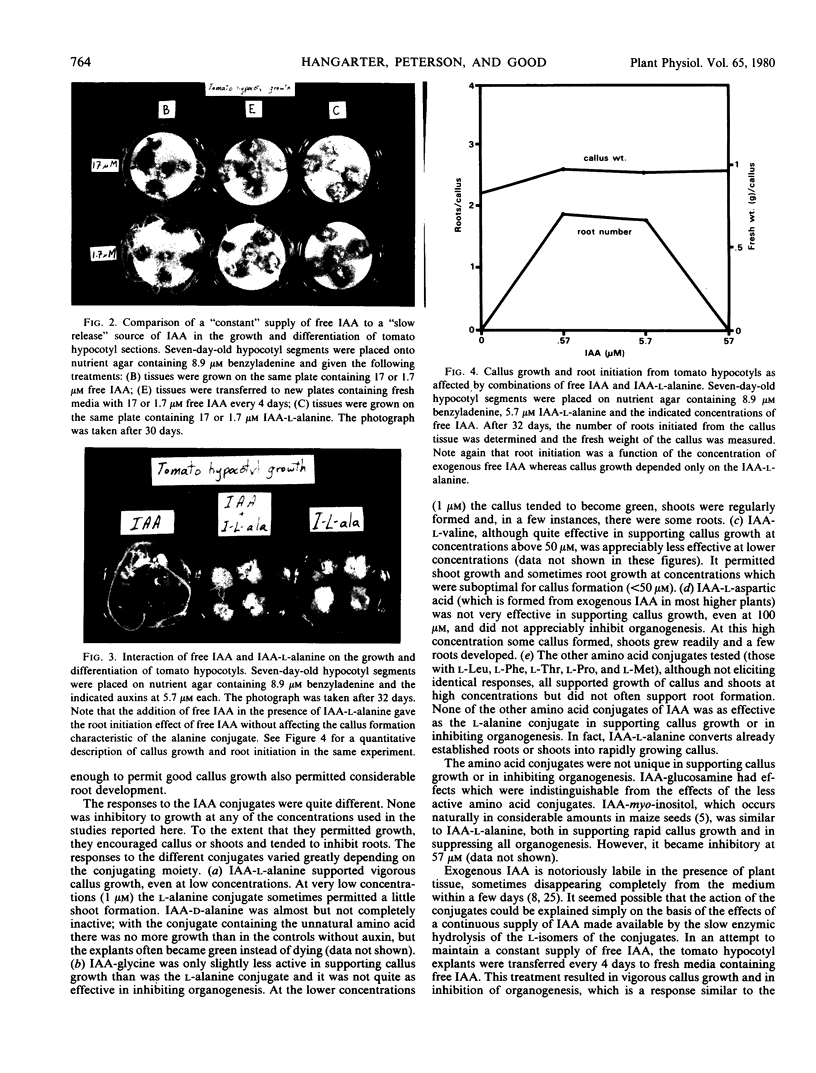
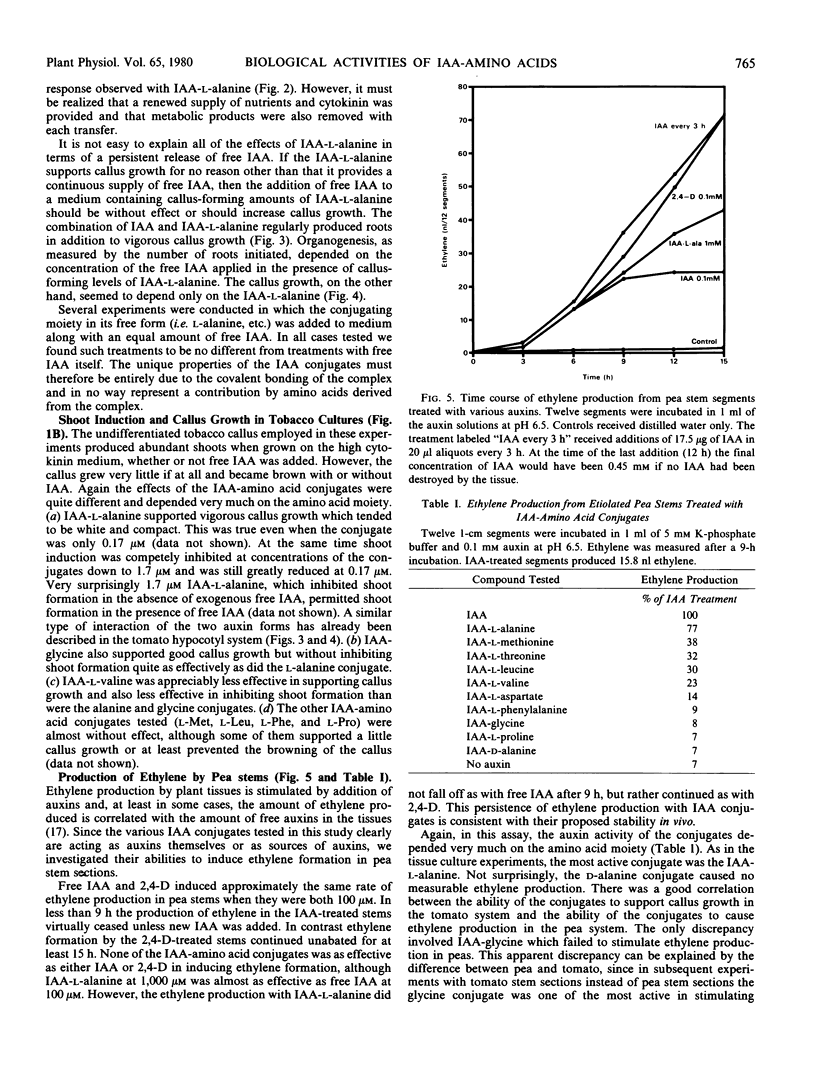
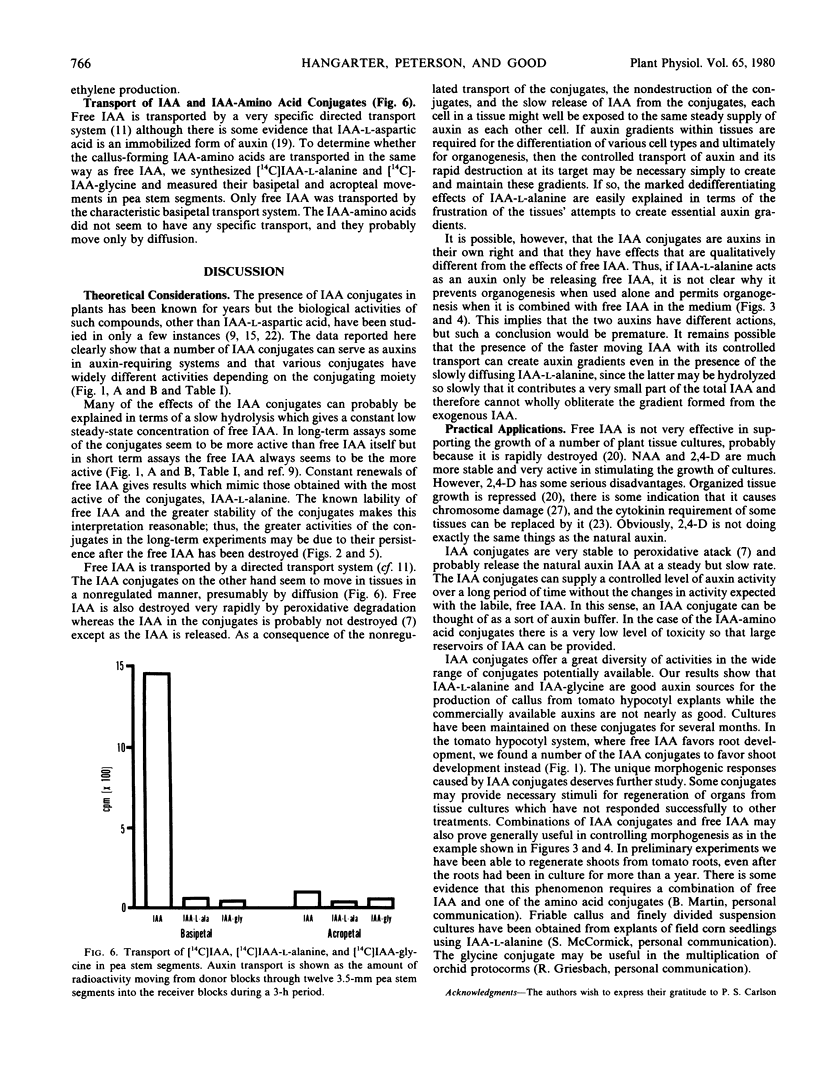
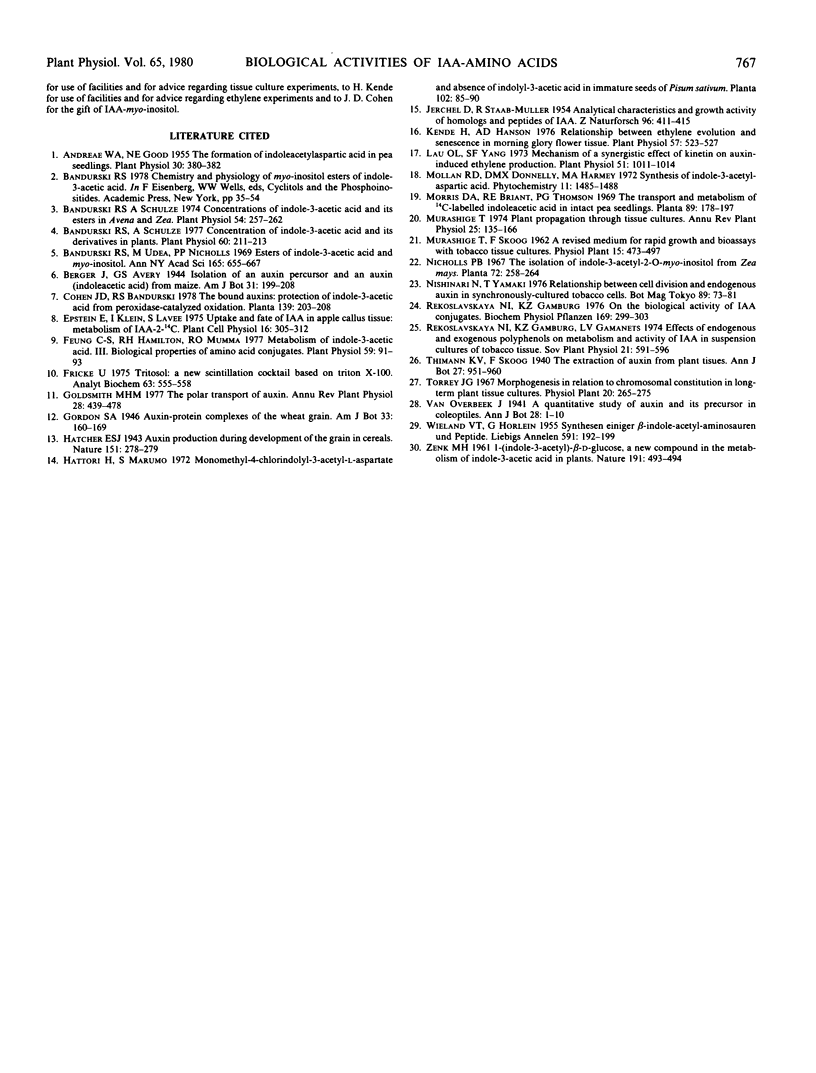
Images in this article
Selected References
These references are in PubMed. This may not be the complete list of references from this article.
- Andreae W. A., Good N. E. The Formation of Indoleacetylaspartic Acid in Pea Seedlings. Plant Physiol. 1955 Jul;30(4):380–382. doi: 10.1104/pp.30.4.380. [DOI] [PMC free article] [PubMed] [Google Scholar]
- Bandurski R. S., Schulze A. Concentration of Indole-3-acetic Acid and Its Derivatives in Plants. Plant Physiol. 1977 Aug;60(2):211–213. doi: 10.1104/pp.60.2.211. [DOI] [PMC free article] [PubMed] [Google Scholar]
- Bandurski R. S., Schulze A. Concentrations of Indole-3-acetic Acid and Its Esters in Avena and Zea. Plant Physiol. 1974 Sep;54(3):257–262. doi: 10.1104/pp.54.3.257. [DOI] [PMC free article] [PubMed] [Google Scholar]
- Feung C. S., Hamilton R. H., Mumma R. O. Metabolism of Indole-3-acetic Acid: IV. Biological Properties of Amino Acid Conjugates. Plant Physiol. 1977 Jan;59(1):91–93. doi: 10.1104/pp.59.1.91. [DOI] [PMC free article] [PubMed] [Google Scholar]
- Fricke U. Tritosol: a new scintillation cocktail based on Triton X-100. Anal Biochem. 1975 Feb;63(2):555–558. doi: 10.1016/0003-2697(75)90379-6. [DOI] [PubMed] [Google Scholar]
- Kende H., Hanson A. D. Relationship between Ethylene Evolution and Senescence in Morning-Glory Flower Tissue. Plant Physiol. 1976 Apr;57(4):523–527. doi: 10.1104/pp.57.4.523. [DOI] [PMC free article] [PubMed] [Google Scholar]
- Lau O. L., Yang S. F. Mechanism of a Synergistic Effect of Kinetin on Auxin-induced Ethylene Production: Suppression of Auxin Conjugation. Plant Physiol. 1973 Jun;51(6):1011–1014. doi: 10.1104/pp.51.6.1011. [DOI] [PMC free article] [PubMed] [Google Scholar]
- ZENK M. H. I-(Indole-3-acetyl)-beta-D-glucose, a new compound in the metabolism of indole-3-acetic acid in plants. Nature. 1961 Jul 29;191:493–494. doi: 10.1038/191493a0. [DOI] [PubMed] [Google Scholar]



